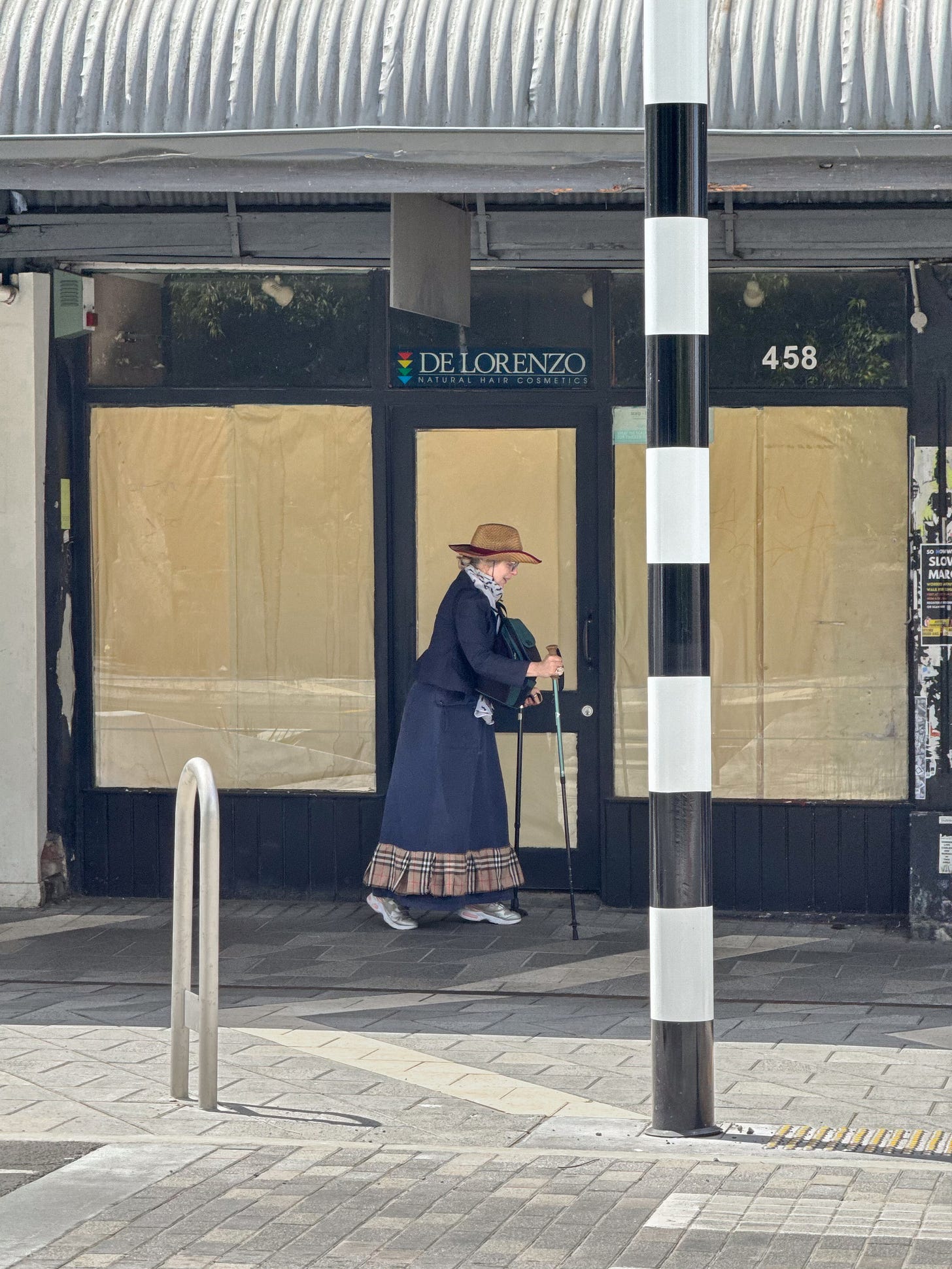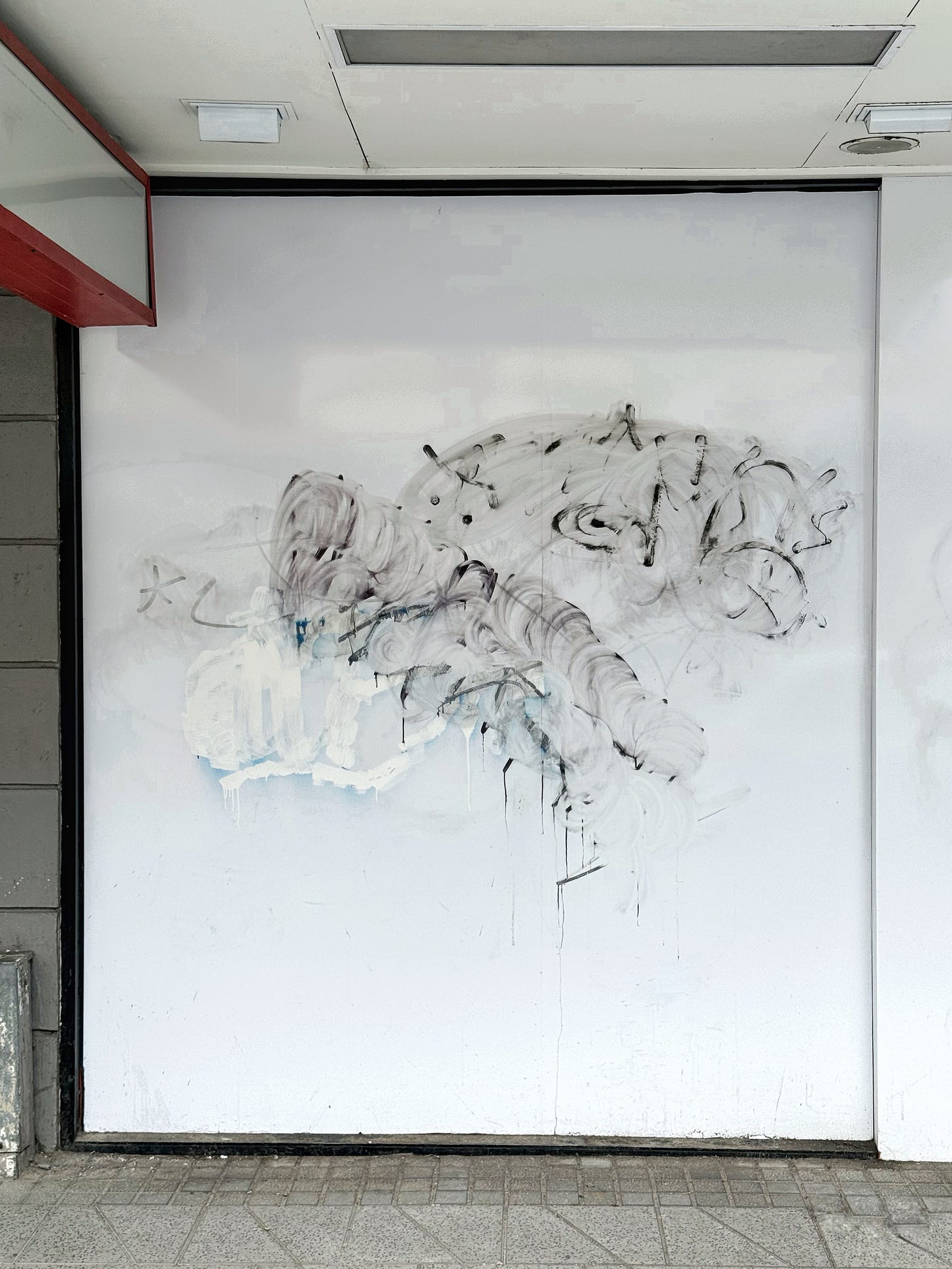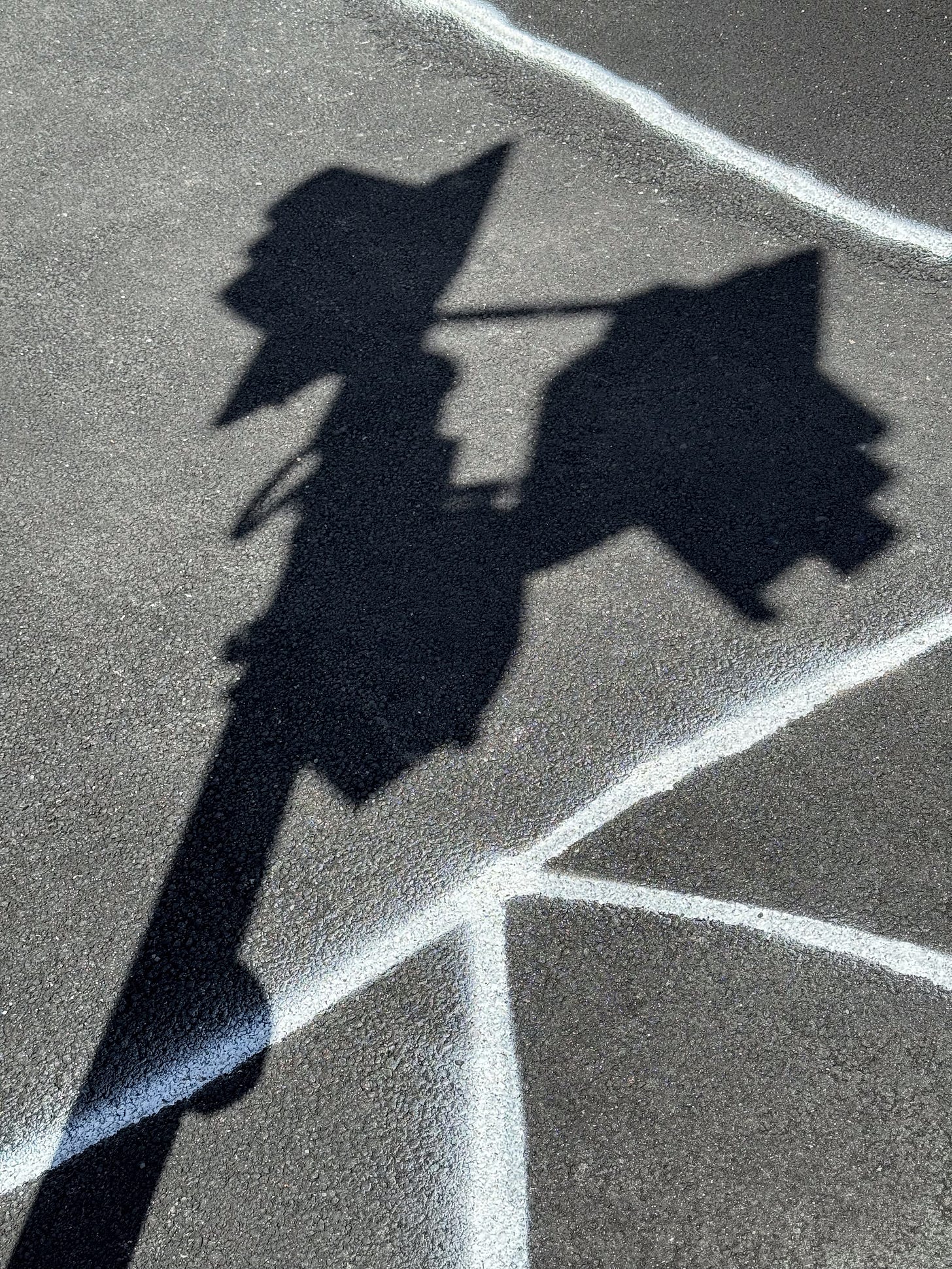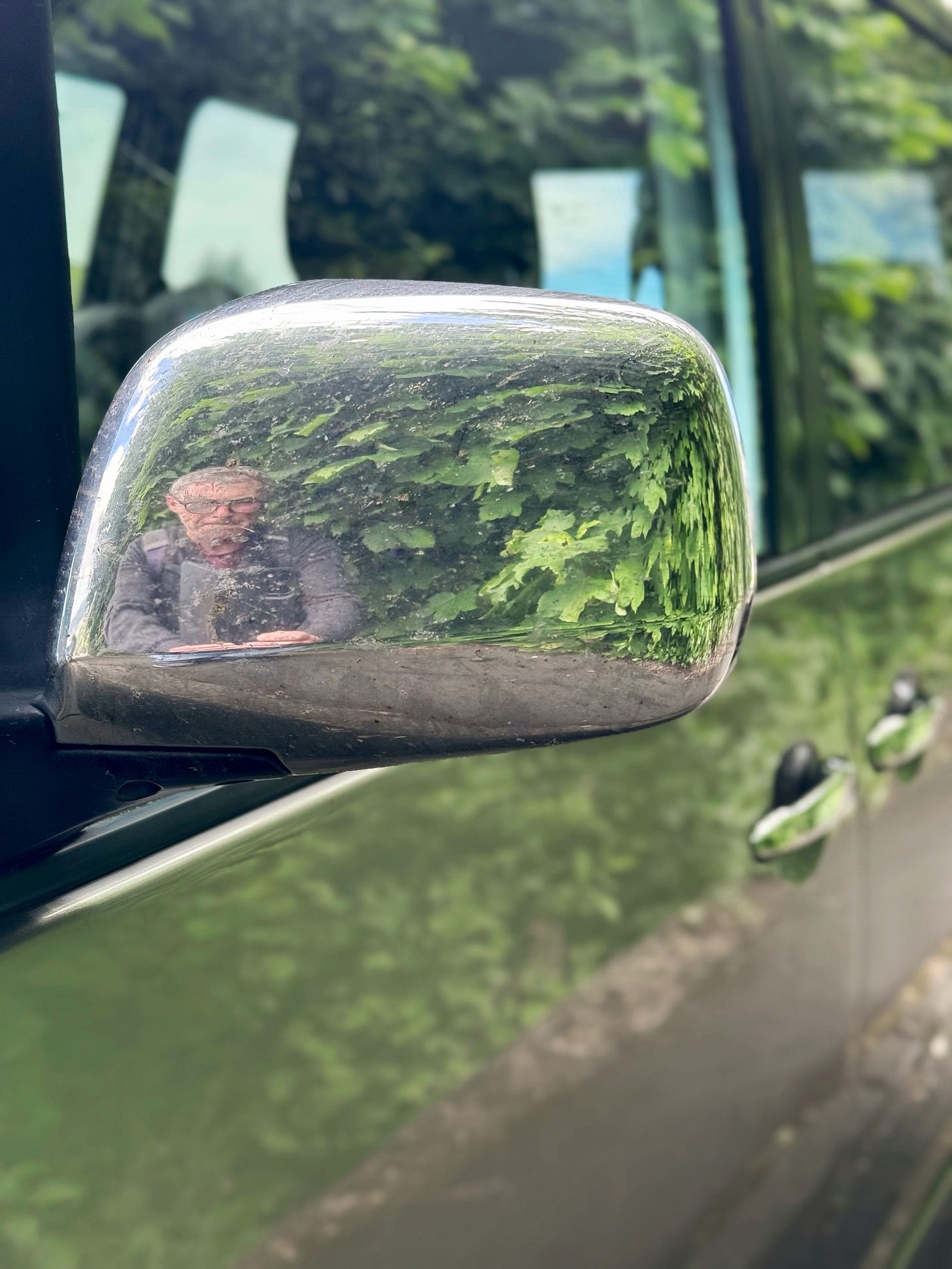I’ve been spending a lot of time documenting political rallies recently, so I’m a bit behind in my weekly newsletters. I’ll write a post about photographing rallies soon. This post is about a normal day wandering around town and noticing things that, although unremarkable, are still extraordinary in their way.
I walk into town most days. It takes about 25 minutes going down, depending on the route, and a bit longer for the return trip. I don’t always have a reason to go for a walk. I think better when I’m walking and I enjoy the exercise. I usually like to be where other people are. Some days, I explore the Town Belt, a tree-covered swathe that runs north-south separating the city centre from the suburban neighborhoods up the hill. Recently, I took advantage of the fine weather and walked down to run a few errands. I took my ‘proper’ camera in my backpack but didn’t end up taking it out as I wasn’t in the mood for anything serious. A professional-looking camera with a long lens changes how you behave and affects people’s reading of your intentions. But I also had my phone.

The image above is my default street photo — an urban backdrop with a blank space that can frame a passing pedestrian, cyclist, or vehicle. Vacant shops often work well because most of the visual distractions have been removed. When I saw these papered-over windows, I pulled out my phone, framed the scene, and waited a few minutes until someone walked by. I saw the composition as an arrangement of rectangles and I adjusted my position until each rectangle had a good relationship with the others. It’s like people waiting at a bus stop. We feel more comfortable when objects are positioned in a way that respectfully acknowledges the presence of other objects. Objects, too, need their own space. Inappropriate touching is to be avoided. I like to catch people in mid-stride because they take the shape of a triangle, which complements the squares and rectangles of the built environment. I’ve taken many photos like this one. It’s become my warmup exercise.

This white-painted window is another empty shop front on George Street, the main shopping street here in Dunedin, New Zealand. I’ve noticed that they’ve had trouble keeping this surface clean and tidy. I don’t know what they expected. A street is a conversation and a pause is an invitation for someone with something on their mind to come out and say it. It’s an opportunity, a prompt, and, for some, a provocation — a red rag to a bull. But when someone accepts the challenge and blurts something out, the response is often “Oh my God, you can’t say THAT, and certainly not HERE!”. Most attempts to correct inappropriate behaviour do more damage than the behaviour they are trying to correct.

I like taking photos of shadows and street markings. There’s a secret code that contractors use when they spray paint on public streets. The marks expressing their intentions are like the lines and symbols on construction drawings. They mean something to the experts, but they’re hieroglyphics to the rest of us. We see the markings as abstract lines and shapes — like typography in a language we don’t understand.
If carefully framed, almost any collection of random shapes can be corralled into a composition that seems to communicate something meaningful, or at least aesthetically pleasing. We prefer orders to chaos and we like to arrange the furniture in our house, the shoes in our closets, and the objects on our desk with care and attention. When photographing things that have no intentional order, we can arrange them as we like by choosing our vantage point, distance, and framing. We are, in effect, rearranging the street furniture to bring some order into the world. Placing things into an agreeable, balanced composition can be a satisfying activity for its own sake. You don’t even have to photograph it. You can simply appreciate that you’ve found the right spot from which to enjoy your preferred arrangement of the world.

I’ve become fascinated by reflections. They present puzzles and can sometimes prompt us to think of things beyond visual illusions. On my way home up the hill, I passed a row of cars parked closely against a footpath overhung by the branches of several large trees. I was walking quickly and a fleeting image in my head of leaves reflected on the back of a review mirror caused me to go back and see if I had missed something. Reflections force us to make a choice. We can see the reflection, or we can see the reflecting surface, but we can’t see both at the same time. Here, we have a choice between the car and the trees. That seemed to reflect reality.
What’s next?
I have several draft posts but I might write something about photographing political rallies next. I don’t like to plan too far in advance, so we’ll see how the week unfolds. I really am meandering here.
What do you think?
Thank you for taking the time to read this post. You are invited to leave a comment below.




Thank you for inspiring ideas on improving my street photography.
I have always found capturing passerbys in a frame to be strangely rewarding. I ask myself, what does it say? I can never answer, but i still do it. I think the isolation of the human form is the answer. I also find reflections similarly satisfying. I like the double exposure aspect. Reflections are also a great way of warming up one's camera to people. You can capture them initimately with your back turned to them and slowly turn around over time and eventually face them. It's s great way to accustom yourself to the locale.